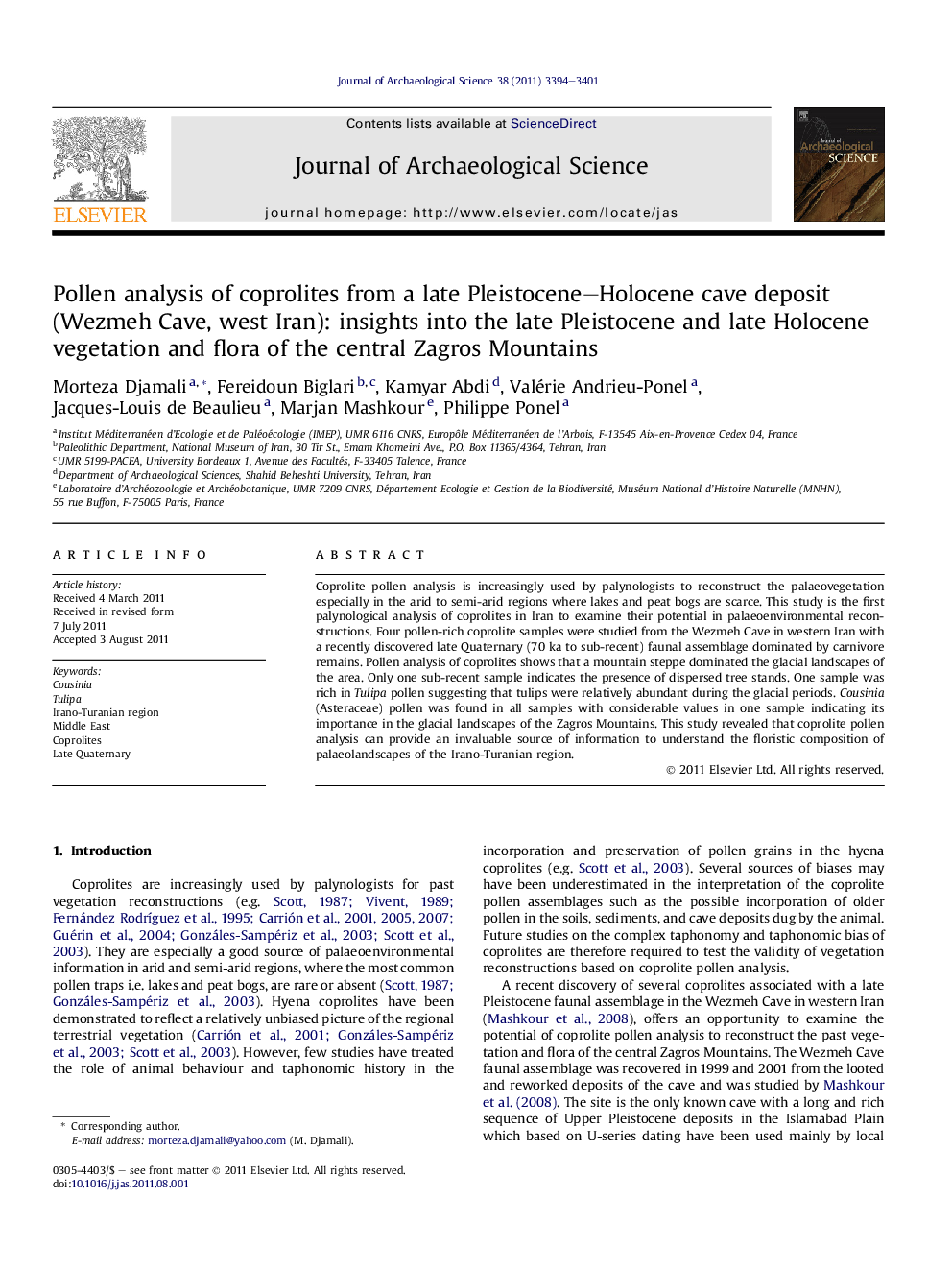| کد مقاله | کد نشریه | سال انتشار | مقاله انگلیسی | نسخه تمام متن |
|---|---|---|---|---|
| 1036013 | 943873 | 2011 | 8 صفحه PDF | دانلود رایگان |

Coprolite pollen analysis is increasingly used by palynologists to reconstruct the palaeovegetation especially in the arid to semi-arid regions where lakes and peat bogs are scarce. This study is the first palynological analysis of coprolites in Iran to examine their potential in palaeoenvironmental reconstructions. Four pollen-rich coprolite samples were studied from the Wezmeh Cave in western Iran with a recently discovered late Quaternary (70 ka to sub-recent) faunal assemblage dominated by carnivore remains. Pollen analysis of coprolites shows that a mountain steppe dominated the glacial landscapes of the area. Only one sub-recent sample indicates the presence of dispersed tree stands. One sample was rich in Tulipa pollen suggesting that tulips were relatively abundant during the glacial periods. Cousinia (Asteraceae) pollen was found in all samples with considerable values in one sample indicating its importance in the glacial landscapes of the Zagros Mountains. This study revealed that coprolite pollen analysis can provide an invaluable source of information to understand the floristic composition of palaeolandscapes of the Irano-Turanian region.
► Seven coprolites from the Wezmeh Cave, W Iran, were studied by pollen analysis.
► Four coprolites were polliniferous and three of them were successfully 14C-dated.
► Pollen data show that the Irano-Turanian glacial steppes had a very rich flora.
► Tulipa and Cousinia were frequent in the landscape.
► Coprolite pollen analysis is an informative palaeoecological method in arid regions.
Journal: Journal of Archaeological Science - Volume 38, Issue 12, December 2011, Pages 3394–3401